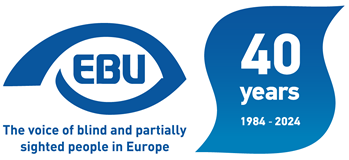Education systems
Equal access to national education, vocational training and lifelong learning systems
Educational settings - mainstream education
Education settings - special education
Collaboration between both systems
Teaching of compensatory skills made necessary by vision loss
Provision of accessible text books and other educational material
Provision of assistive technology
1. Equal access to:
1.1. National education system
Every attempt is made to place children with special educational needs into mainstream schools, reserving special schools for those with more serious problems. In 2008 - 2009, 8.5 % of pupils who attended basic schools studied according to individual study programs in one or several subjects. People with special needs have the right for inclusive education guaranteed by the state. The teaching of people with special needs must be an integral part of national education planning, creation of curricula and organisation of schools.
1.2. National vocational training and lifelong learning systems
At several vocational schools, it is possible for students with special needs to get vocational education and training
2. Educational settings
2.1.
In 2007- 2008, 39 children with visual impairment were educated in mainstream classes in mainstream schools, and 21 students were educated in special classes within mainstream schools. In a state or municipal school, the Ministry of Education and Research or the local municipality or town government shall form the following classes, if necessary: classes for children with physical and sensory disabilities and or speech impairments.
2.1.1. Primary
2.1.2. Secondary
In basic schools and upper secondary schools, the national curriculum is valid for students with special needs as a framework to refer to in terms of learning objectives and content. In addition, the simplified national curriculum and the national curriculum for students with moderate and severe disabilities have been adopted by the regulation of the Ministry of Education and Research. An individual curriculum may be compiled for students with special needs according to their abilities.
2.1.3. University
2.1.4. Vocational training and lifelong learning
2.2. Special education
In 2007- 2008 39 children with visual impairment were educated in special schools, with the average duration of basic studies being 10 years. For classes for children with special educational needs, a lower maximum limit for the number of students applies: 12 students in a class for children with speech impairments, sensory and physical disabilities. There exists one special school exclusively for students with visual impairments.
2.2.1. Primary
2.2.2. Secondary
2.2.3. University
2.2.4. Vocational training and lifelong learning
2.3. Collaboration between both systems
2.3.1. Primary
Adaptation groups may be formed in childcare institutions, where children with special needs learn together with other children and groups for children with special needs, which include only children with special needs.
2.3.2. Secondary
2.3.3. University
Higher education institutions have created specific possibilities for students with special needs to compete for study places.
2.3.4. Vocational training and lifelong learning
3. Teaching of compensatory skills made necessary by vision loss
3.1. Subjects (Braille, computer, daily-living skills, mobility, etc.)
3.2. Training and certificates for visually impaired teachers (Braille, computer, daily-living skills, mobility, etc.)
3.3. Training and certificates for visually impaired students (Braille, computer, daily-living skills, mobility, etc.)
4. Provision of accessible text books and other educational material
4.1. Provision of the basic documents
Instruction in a mainstream school presumes the existence of translation and other support services and equipment. These services must meet the needs of people with all types of special needs. Associations of parents and associations of persons with special need must be involved at all levels of education.
Students with visual impairments are supplied with books in the Braille system and with other study materials.
4.2. Adaptation and transcription of the documents
5. Provision of assistive technology
5.1. Primary
5.2. Secondary
5.3. University
5.4. Vocational training and lifelong learning
Following the national curriculum for the corresponding vocation or profession, the special needs of the person and his or her rehabilitation plan, communication support (sign language interpreter, speech synthesiser, etc.) and different kinds of study support (ICT support, adapted study materials, individual adapted study materials and study materials in simplified language) are used.
(Sources - http://www.european-agency.org/country-information/estonia/national-overview/special-needs-education-within-the-education-system September 2009 and
http://eacea.ec.europa.eu/education/eurydice/eurybase_en.php#estonia 2008 - 2009)

